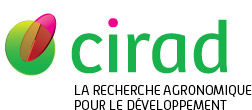Dupuy Stéphane, Barbe Eric, Balestrat Maud. 2012. An object-based image analysis method for monitoring land conversion by artificial sprawl use of RapidEye and IRS data. Remote Sensing, 4 (2) : 404-423.

|
Version publiée
- Anglais
Utilisation soumise à autorisation de l'auteur ou du Cirad. document_563160.pdf Télécharger (1MB) |
Url - jeu de données - Dataverse Cirad : https://doi.org/10.18167/DVN1/V7HOVH
Quartile : Q2, Sujet : REMOTE SENSING
Résumé : In France, in the peri-urban context, urban sprawl dynamics are particularly strong with huge population growth as well as a land crisis. The increase and spreading of built-up areas from the city centre towards the periphery takes place to the detriment of natural and agricultural spaces. The conversion of land with agricultural potential is all the more worrying as it is usually irreversible. The French Ministry of Agriculture therefore needs reliable and repeatable spatial-temporal methods to locate and quantify loss of land at both local and national scales. The main objective of this study was to design a repeatable method to monitor land conversion characterized by artificial sprawl: (i) We used an object-based image analysis to extract artificial areas from satellite images; (ii) We built an artificial patch that consists of aggregating all the peripheral areas that characterize artificial areas. The "artificialized" patch concept is an innovative extension of the urban patch concept, but differs in the nature of its components and in the continuity distance applied; (iii) The diachronic analysis of artificial patch maps enables characterization of artificial sprawl. The method was applied at the scale of four departments (similar to provinces) along the coast of Languedoc-Roussillon, in the South of France, based on two satellite datasets, one acquired in 1996-1997 (Indian Remote Sensing) and the other in 2009 (RapidEye). In the four departments, we measured an increase in artificial areas of from 113,000 ha in 1997 to 133,000 ha in 2009, i.e., an 18% increase in 12 years. The package comes in the form of a 1/15,000 valid cartography, usable at the scale of a commune (the smallest territorial division used for administrative purposes in France) that can be adapted to departmental and regional scales. The method is reproducible in homogenous spatial-temporal terms, so that it could be used periodically to assess changes in land conversion rates in France as a whole.
Mots-clés Agrovoc : cartographie, utilisation des terres, télédétection, analyse d'image, couverture du sol, classification, modèle, terre agricole, zone urbaine, forêt, urbanisation
Mots-clés géographiques Agrovoc : Languedoc-Roussillon, France
Classification Agris : P31 - Levés et cartographie des sols
B10 - Géographie
U10 - Informatique, mathématiques et statistiques
E11 - Économie et politique foncières
U30 - Méthodes de recherche
Champ stratégique Cirad : Axe 6 (2005-2013) - Agriculture, environnement, nature et sociétés
Auteurs et affiliations
-
Dupuy Stéphane, CIRAD-ES-UMR TETIS (FRA)
 ORCID: 0000-0002-9710-5364
ORCID: 0000-0002-9710-5364
- Barbe Eric, IRSTEA (FRA)
- Balestrat Maud, IRSTEA (FRA)
Autres liens de la publication
Source : Cirad - Agritrop (https://agritrop.cirad.fr/563160/)
[ Page générée et mise en cache le 2024-03-17 ]




